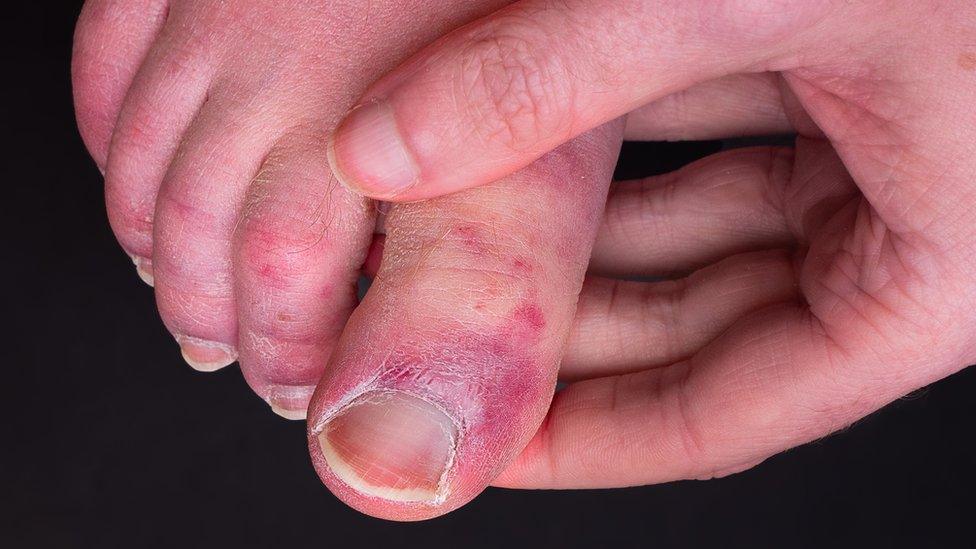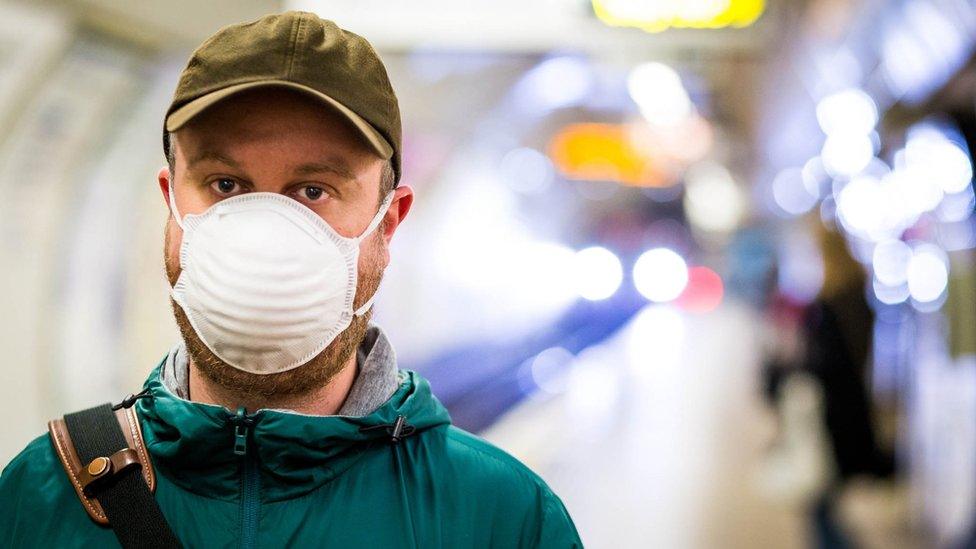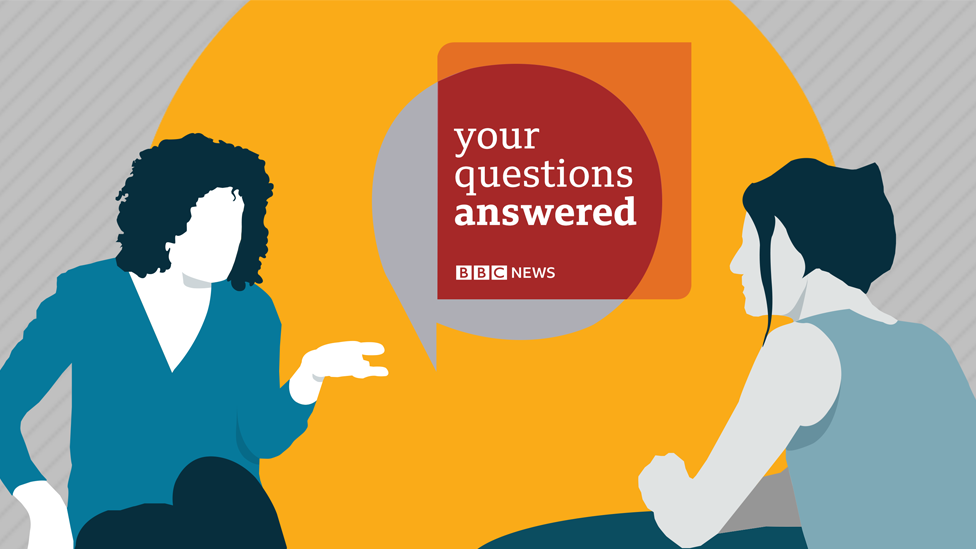Covid symptoms: What are they and how do I protect myself?
- Published

There are three main symptoms of coronavirus.
If you have any of them, you should get a test.
What are the symptoms?
New and continuous cough - coughing a lot for more than an hour, or having three or more coughing episodes in 24 hours
Fever - a temperature above 37.8C
Change in smell or taste - either you cannot taste or smell anything, or these senses are different to normal.
Public Health England, external says about 85% of people with Covid will have at least one of these symptoms.
People infected with new variants such as Delta may be more likely to have other symptoms, such as headache, sore throat or a runny nose, according to research from the Zoe Covid Study and an ONS survey.


If you have any symptoms you should get tested as soon as possible and not leave home for any other reason.
It takes five days on average from the moment you're infected for symptoms to show.


Is Covid the same in everyone?
No - it can affect multiple organs and has several less common symptoms.
Scientists using data on the health of four million people, external say Covid has six sub-types:
Flu-like with no fever: Headache, loss of smell, muscle pains, cough, sore throat, chest pain, no fever
Flu-like with fever: Headache, loss of smell, cough, sore throat, hoarseness, fever, loss of appetite
Gastrointestinal: Headache, loss of smell, loss of appetite, diarrhoea, sore throat, chest pain, no cough
Fatigue (severe level one): Headache, loss of smell, cough, fever, hoarseness, chest pain, fatigue
Confusion (severe level two): Headache, loss of smell, loss of appetite, cough, fever, hoarseness, sore throat, chest pain, fatigue, confusion, muscle pain
Abdominal and respiratory (severe level three): Headache, loss of smell, loss of appetite, cough, fever, hoarseness, sore throat, chest pain, fatigue, confusion, muscle pain, shortness of breath, diarrhoea, abdominal pain
Researchers think that vomiting, diarrhoea and abdominal cramps could be a sign of coronavirus in children.
What about Covid toe?
Some people who catch Covid develop chilblain-like lesions on their toes or fingers.

It can happen to anyone, but is more common in children and teenagers.
For some it's painless, but the rash can be very sore and itchy.
It appears to be a side effect of the body switching into attack mode to fight off the virus.
Writing in the British Journal of Dermatology, external, researchers say they've pinpointed which parts of the immune system are responsible, which should lead to better treatments.
If I have a cough, is it definitely Covid?
Lots of other viruses have similar symptoms to Covid, including flu.
Public Health England says just under half of people who have one of the three main Covid symptoms will not have it.
What should I do if I have Covid?
If you have a positive test result you should self-isolate at home for at least 10 days, external from the time symptoms started.
Most people will only have mild symptoms, which can be managed with pain relief (like paracetamol), bed rest and fluids.
You should not go to a GP surgery, pharmacy or hospital.
Since 16 August, people who are double jabbed (or aged under 18) don't have to self-isolate, external if they're identified as a close contact of a person who tests positive.
When should people go to hospital?
Getting vaccinated is the best way to prevent serious illness, hospitalisation or death from Covid.
If you are seriously unwell and you have a medical emergency you should call 999 - this includes feeling so breathless that you can't speak more than a few words.
If you're worried your symptoms are getting worse, use the NHS 111 website, external England, NHS Inform, external in Scotland or the equivalents in Wales, external and Northern Ireland, external.
The main reason people need hospital care is for difficulty breathing where they may be given oxygen.
The most seriously ill patients may require ventilation - where patients are sedated and air is pushed into their lungs.
Older people, and those with pre-existing medical conditions (such as asthma, diabetes, heart disease, high blood pressure), are more likely to become severely ill. Men are at slightly higher risk of dying from the virus than women.
- Published3 May 2022

- Published23 March 2020

- Published22 February 2022

- Published5 July 2022
